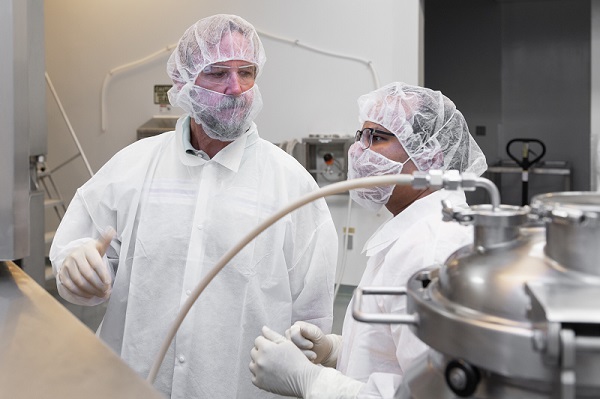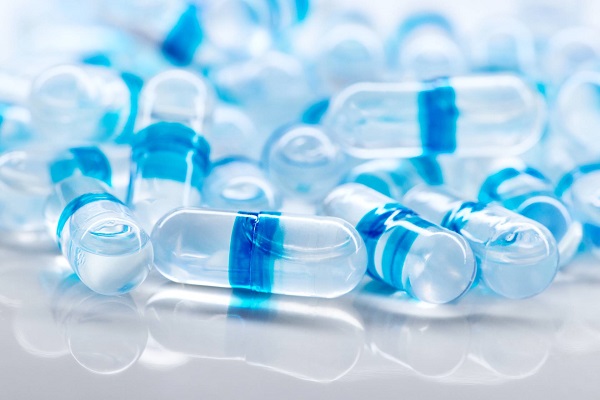Navigating the complexities of bilayer tablet manufacturing

The ability to achieve immediate and controlled-release mechanisms within the same tablet has revolutionised combination therapies, optimising treatment regimens, and significantly enhancing patient compliance.
This dual-layer design enables the formulation of therapies for a variety of conditions, such as diabetes, cardiovascular diseases, and HIV, where the combination of immediate and sustained drug release can ensure better therapeutic outcomes. Despite their benefits, manufacturing bilayer tablets remains a complex process, presenting unique challenges that demand a thorough understanding of materials, precise formulation techniques, and advanced manufacturing technologies.
The manufacturing process of bilayer tablets
Bilayer tablet production relies on rotary presses with specialised dual-hopper systems. The first granulated material, designated as the base layer, is fed into the die cavity and subjected to partial compression. This step ensures adequate initial shaping while preserving surface roughness for optimal adhesion with the second layer. The subsequent granulation is then introduced to form the second layer, after which the combined tablet undergoes final compression to achieve the desired hardness, weight, and structural integrity.
While this process appears straightforward, numerous variables can compromise the quality of the final product. Challenges include maintaining uniformity in layer weights, achieving robust interfacial adhesion, and preventing cross-contamination between layers. The mechanical stresses during tablet compression, handling, and transportation further exacerbate the risk of delamination, one of the most critical issues in bilayer tablet production.
Challenges in bilayer tablet manufacturing
Delamination, or the separation of layers along their interface, poses a major challenge. This defect often results from insufficient adhesion between layers, mismatched material properties, or improper compression settings. When delamination occurs, the tablet loses its mechanical stability and intended release profile, potentially leading to compromised therapeutic efficacy. The risk of delamination is heightened during storage or handling due to environmental factors such as temperature and humidity, which may exacerbate stress at the layer interfaces.
Inconsistent layer weights are another recurring issue. Variability in granule flow properties or die fill levels can result in uneven dosing, particularly for the second layer, which is harder to monitor using standard manufacturing equipment. Such inconsistencies can affect the therapeutic accuracy and regulatory compliance of the final product. Moreover, the physicochemical properties of the materials, including compressibility, plasticity, and viscoelasticity, play a critical role in ensuring successful layer formation and adhesion. Materials with differing mechanical behaviours can lead to stress mismatches between layers, increasing the likelihood of defects such as capping and lamination.
Excessive or uneven application of lubricants further complicates the manufacturing process. Lubricants, such as magnesium stearate, are essential for preventing sticking and ensuring smooth ejection from the die cavity. However, their overuse can interfere with interfacial bonding, weakening the adhesion between layers. This is particularly problematic for polymeric materials, where the adverse effects of excessive lubrication are more pronounced.
Optimising the manufacturing process
To mitigate these challenges, careful optimisation of both materials and processes is necessary. Selection of ingredients with compatible mechanical properties is fundamental to ensuring strong interfacial adhesion. Materials used in each layer should exhibit similar compaction profiles to reduce stress mismatches. When this is not feasible, adjustments in the formulation, such as using shared excipients, can help harmonise the properties of adjacent layers.
Compression forces play a pivotal role in determining the mechanical integrity of bilayer tablets. The first layer should be compacted with minimal force to maintain surface roughness, facilitating stronger adhesion with the second layer. Excessive compaction of the first layer can create a smooth surface that reduces interfacial bonding strength. Similarly, the compression force applied to the second layer must be carefully calibrated to achieve adequate cohesion without introducing additional stress.
Modern rotary presses equipped with advanced control systems provide an effective solution to many of these issues. These presses can monitor and adjust parameters such as die fill levels, compression force, and turret speed in real time, ensuring consistent layer weights and overall tablet quality. Some systems also include sensors for detecting layer weight variations, enabling precise control over both individual layers and the complete tablet.
Lubrication strategies also require careful attention. External lubrication techniques, such as spraying lubricant onto punches and dies, offer a viable alternative to traditional methods, reducing the risk of weakening interfacial adhesion. This approach not only improves the mechanical integrity of the tablet but also enhances the overall efficiency of the manufacturing process.
The role of technological advancements
Recent innovations in bilayer tablet manufacturing have significantly improved the ability to overcome production challenges. Computational modelling techniques, such as finite element analysis, allow manufacturers to simulate the behaviour of materials during tablet compression, providing valuable insights into optimising process parameters. These tools help predict potential issues such as delamination or stress mismatches, enabling proactive adjustments in the manufacturing process.
Advances in formulation technologies have also contributed to the success of bilayer tablets. Buffer layers, for instance, can be introduced between APIs to prevent chemical interactions, enhancing the stability and efficacy of the final product. Similarly, the development of multi-layer granules with tailored release profiles has expanded the therapeutic possibilities of bilayer tablets, enabling more precise control over drug release kinetics.
Addressing common issues
Delamination remains one of the most pressing concerns in bilayer tablet production. Addressing this issue requires a multifaceted approach that combines material selection, formulation adjustments, and process optimisation. For instance, maintaining a balance between layer weights, typically in ratios of 1:1 or 1:2, can help reduce stress at the interface. Additionally, the application of minimal pre-compression force ensures sufficient roughness for adhesion without compromising the structural integrity of the first layer.
Inconsistent layer weights, another common issue, can be mitigated through improved granule formulations and the use of advanced equipment. Modern presses equipped with weight monitoring systems for individual layers enable real-time adjustments, ensuring consistent dosing across production batches. Such innovations not only enhance the quality of the final product but also improve regulatory compliance by reducing variability.
Conclusion
Bilayer tablets exemplify the potential of modern pharmaceutical engineering to address complex therapeutic challenges. Their ability to deliver combination therapies and dual release profiles in a single dosage form offers unmatched benefits for both patients and healthcare providers. However, the manufacturing process demands meticulous attention to detail, from material selection to the optimisation of process parameters.
By leveraging technological advancements and adopting a holistic approach to formulation and production, manufacturers can overcome the inherent challenges of bilayer tablet manufacturing. This ensures the consistent production of high-quality tablets that meet therapeutic needs and regulatory standards. As innovation continues to reshape the pharmaceutical landscape, bilayer tablets are poised to remain a cornerstone of advanced drug delivery systems.
Reference
Mechanistic characterisation of bilayer tablet formulations - https://www.sciencedirect.com/science/article/abs/pii/S0032591012003750

 Go Back
Go Back





